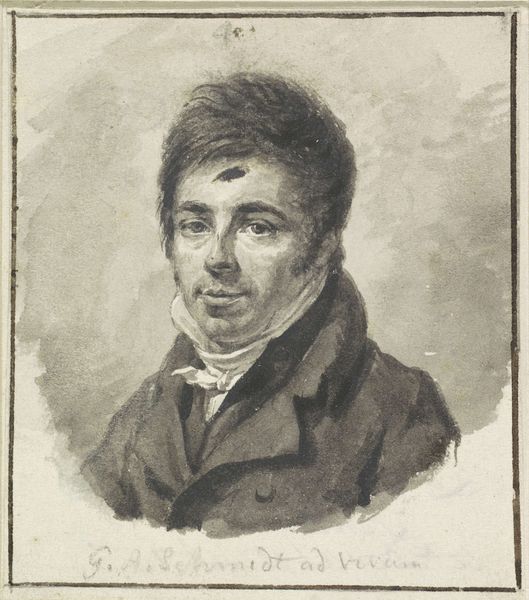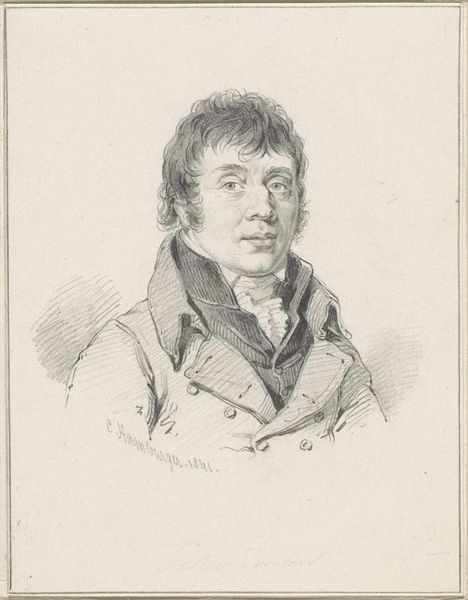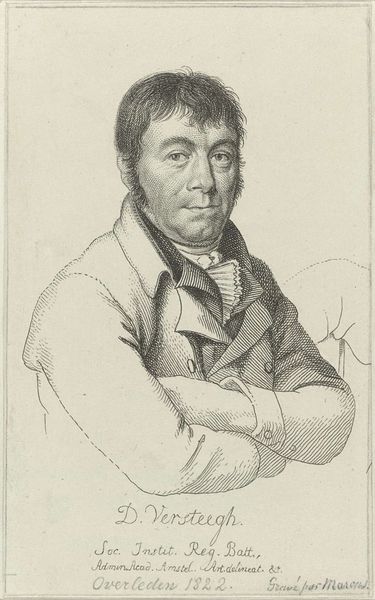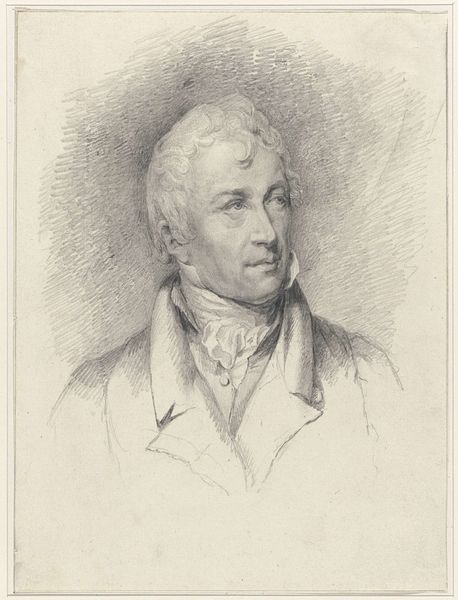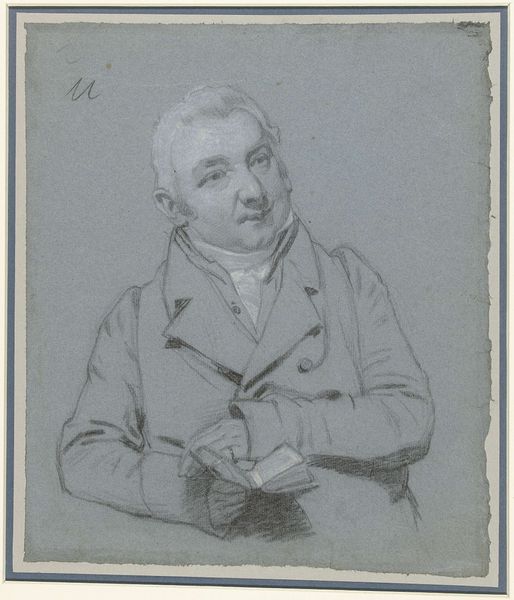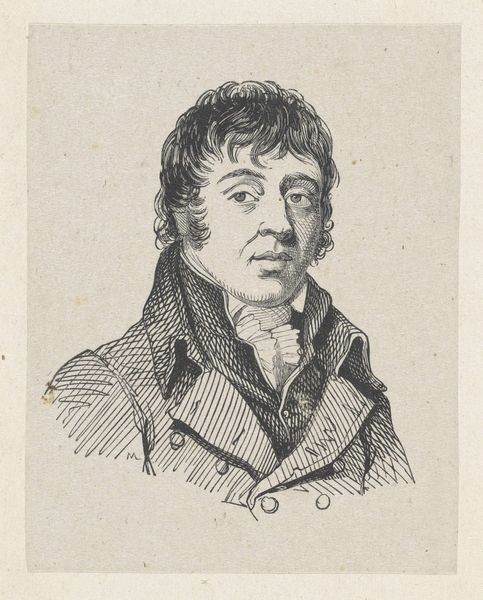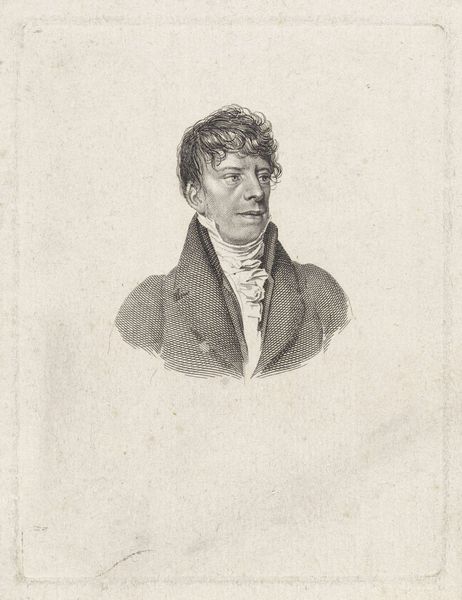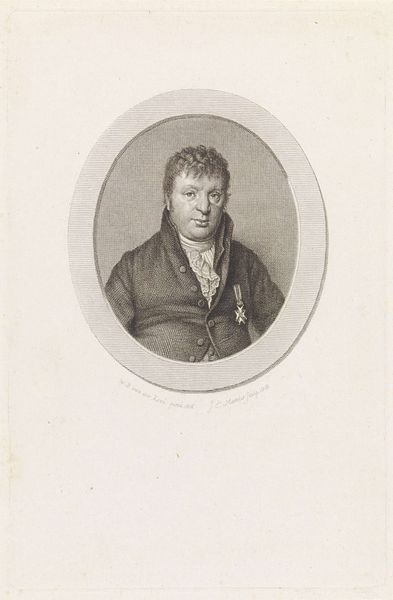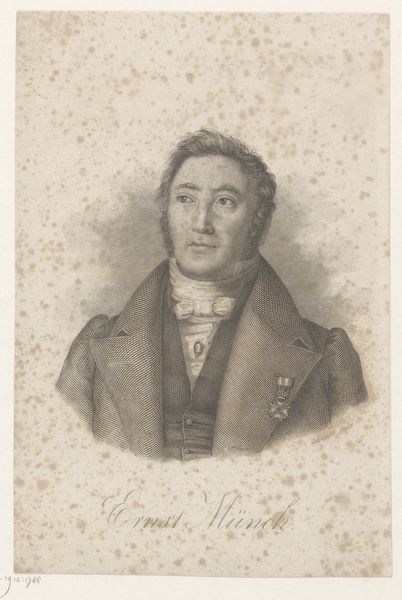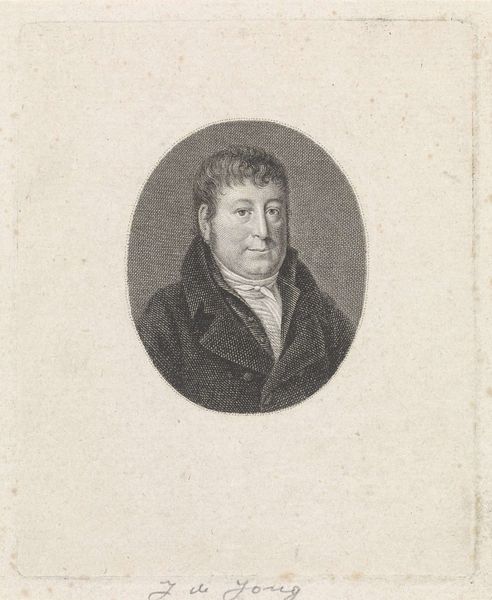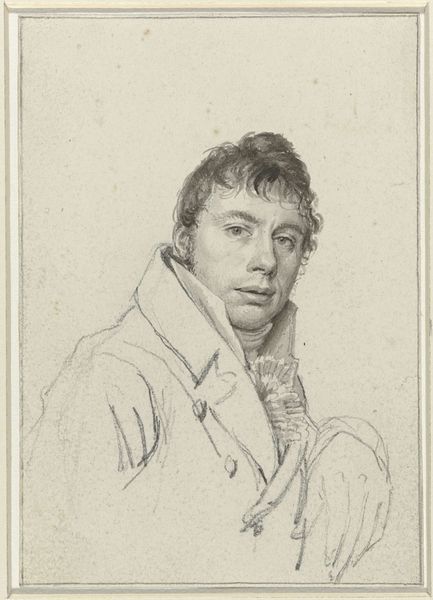
drawing, pencil
#
portrait
#
pencil drawn
#
drawing
#
pencil drawing
#
romanticism
#
pencil
#
portrait drawing
Dimensions: height 107 mm, width 78 mm
Copyright: Rijks Museum: Open Domain
Editor: This is Hendrik Willem Caspari's "Portret van Johan Christiaan Willem Saft," a pencil drawing created sometime between 1780 and 1829. There's a directness in his gaze that feels quite modern, yet the clothing speaks of another era. What strikes you when you look at it? Curator: The subject’s clothing indeed places him firmly in the late 18th or early 19th century. But let's think about portraiture itself – what purpose did it serve at this time, and for whom? Was it accessible to all or mainly the elite? This work makes me consider who has the power to be remembered and how that shapes our understanding of the past. This drawing may depict a man of privilege but in terms of access to formal painted portraits he may be somewhere in the middle-class. Editor: That's a great point. So, a drawing like this could offer a glimpse into a social stratum perhaps underrepresented in grander portraits? Curator: Precisely. And think about the act of portraiture itself – it's not just about representation, but also about constructing an image, performing an identity. The Romanticism period plays a role. He seems to be aware he is performing the image, like a display of status for the growing Dutch middle-class who at this moment start to become visible. Does the sitter, Johan, seem idealized to you, or rather captured in a realistic moment? Editor: I see some attempt at idealization. There's a smoothness to the skin, perhaps minimizing imperfections, that fits with Romantic ideals. Curator: Yes. But what about his expression? Is there a hint of melancholy? Consider how that may intersect with broader Romantic notions of individualism and inner emotional life. Editor: I hadn't thought of that. It's interesting how a simple portrait drawing can reveal so much about social structures and artistic ideals. Thanks! Curator: And it reminds us that art is never neutral; it's always a product of its time and the power dynamics within it. Looking closely is important.
Comments
No comments
Be the first to comment and join the conversation on the ultimate creative platform.
